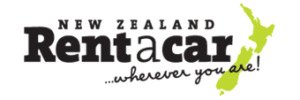If most of your driving experience is in Europe or the US/Canada, you are likely to encounter a few differences in the rental car you hire in New Zealand. Almost all cars on our roads are Japanese, and have been for more than twenty years. Their renown reliability, plus of course right hand drive configuration, made them ideal replacements for the scuttling remnants of the British motor industry that we had been nursing through the eighties.
As familiar as the Toyotas, Nissans, Mazdas and Mitsubishis have become to Kiwi drivers, they can be a headache for tourists who are already having to cope with getting in the wrong side of the car. Here we give you some tips on looking after your rental car, and attempt to cover a few of the basic points of difference.
- Picking up your wheels
This is a critical time, but quite often there is a fair amount of “she’ll be right” on behalf of both the hirer and hiree. Understandably, you want to hit the road, and the rental operator has phones ringing and other customers waiting. You will forget to ask all the questions that had been rattling around your head for weeks while you planned your trip, and they will forget to tell you some quirks of operation in your car. To be fair, the rental staff have been behind the wheel of dozens, perhaps hundreds of cars similar to this, so for them these may seem too obvious to bore you with. I’m not suggesting you turn collecting your rental car into an exercise in pedantry, but if I could narrow it down to a few tips, they would be:
Bring the licences of all likely drivers with you. Hirers often casually mention that their spouse “might” drive, but don’t have that person or their licence with them. No licence on the rental contract, no insurance, so don’t even think about it. Some companies will let you add licences by sending scans or photos through during the course of the hire, but don’t take this for granted, others can be quite strict. Licences should be in English, or accompanied by an International Driving Permit or authorised translation.
Take photos of the car. The rental company will probably have done this, but in this day and age it is easy to walk around the car with your phone and take a few snaps while it’s still on their premises. The staff should point out existing damage, take close-ups of this. Disputes still can arise, even between perfectly honest rental companies and perfectly honest customers, so this is free peace of mind.
Check the important things while you’re there. If there is a stereo or GPS, try and get some joy out of it, if you plan to fold seats away for luggage or sleeping space, do it now. Trying to communicate these things over the phone later can be very frustrating for both parties.
Okay, so you have your vehicle, and you have loaded up your possessions. Either the car is smaller than you expected, or you brought more stuff than you meant to, it’s hard to say. But now it’s in and you have managed a few hours of uneventful driving. The nervous, naughty thrill of driving on the “wrong” side is abating. Remember all our speed and distance signs are in kilometres, you’ll get the hang of that, but in the meantime here is a nifty converter. Making a lunch stop in some idyllic shady spot, you decide to grab a jacket. Then…drama. It’s in the boot/trunk.
- Opening the trunk
…hereafter known by its proper name, the boot. On European cars there is often a nice big pushbutton on the boot lid itself, but you have pushed all the badges and lights to no avail, and now a passing cloud formation has lowered the temperature even further. Most Japanese (and Australian) cars have the boot release inside the car, down the right hand side of the driver’s seat. It can also be on the right hand side of the dashboard, and larger, more expensive cars sometimes get clever and fit it under the driver’s door armrest. Quite common these days is a boot release switch on the car remote, which is all well and good until you find yourself opening the boot instead of disabling the alarm every time you start the car.
- Fuel
Sooner or later you will need to refill the tank, in preparation for those long stretches of provincial highway with no fuel stops. Make a mental note of which side the petrol flap is on, it could save you shuffling the car around the forecourt of a busy service station for the amusement of the locals. The petrol flap release is usually a companion of the boot release, so right hand side of seat, right side of dashboard, or under door armrest. Some cars have a flap that only locks when the central locking is activated, so just poke the leading edge of the flap with your finger and it will yawn open. Inside the flap is usually a sticker denoting the type of fuel your vehicle takes, or sometimes it is stenciled on the cap itself (or written on your rental agreement). Confusing premium with unleaded petrol is nothing to worry about, but if you mix up petrol and diesel you will need to phone the rental agent and tell them you have made a mistake.
- Bonnet/Hood Release
Why do you need this? Because, although the mechanical integrity of the car is the responsibility of the rental company, you will almost certainly find it is your contractual obligation to check the fluids at reasonable intervals. The latch is usually found under the lower right hand corner of the dashboard, or in the kick panel ahead of the driver’s door. This releases the bonnet a couple of centimetres, but there will be a secondary latch hidden under its leading edge which you will have to find by feel. It is worth familiarising yourself with the coolant (water) reservoir, oil dipstick, and battery locations before you need them.
- Changing a Tyre
Thanks to better roads and tyres, punctures are a rare ordeal these days. Because of that, the modern motorist is probably less prepared for the eventuality than our forefathers were. Rental car companies generally use a network of roadside assistance contractors to deal with minor issues such as this, but if you are in Cheviot, North Canterbury, in the middle of the night, the nearest technician could be a couple of hours away. Should you be resigned to changing the wheel yourself, now is a good time to find the spare. Actually, a good time would have been when you picked up the car, but who thinks of everything?
In cars, the tyre and tools are usually under the wooden floor of the boot/trunk. In people movers and minibuses the tyre is often suspended in a cradle under the rear of the vehicle, the tools in a vinyl pouch in the vehicle and needs to be lowered using the wheel brace and possibly some extension rods. The spare tyre is most probably a “doughnut”, or space saver. These are standard issue on most imported Japanese cars, and are intended to get you to a place of repair – not to tour half the country on. They have a maximum speed rating sticker on them, usually 80 kilometres per hour.
So you know the drill: these instructions are not meant to replace information supplied by the manufacturer or the rental car company. Do read the stickers on the tools, if any, and do use common sense. Don’t attempt this if you really have no idea what you’re doing. Everyone else, take a deep breath and get out the spare and make sure the vehicle is parked safely and securely.
Loosen wheel nuts before jacking up the car. Cars usually have scissor jacks, which are meant to be located under reinforced, notched areas of the sill (rocker) panels. Heavier vehicles have screw or bottle-type jacks and these can be placed directly under an axle or spring. Once the wheel is changed, finger-tighten the nuts and lower the vehicle back to earth, tightening everything with the wheel brace then. Pack up the dead tyre and the tools, clean your hands on the Wet Wipes you had the forethought to place in the glove compartment, and proceed with care. Aim to have the original tyre repaired and refitted as soon as possible.
- Returning Your Vehicle
Don’t forget to refill the tank if that is part of your contract, there is usually a penalty for not doing so, and if your rental car is exceptionally dirty it pays to run it through a service station car wash before you return it. Firstly, because rental car operators can charge grooming fees for vehicles returned in really foul states, and secondly, it will enable the staff to check the vehicle accurately for damage, and you to take more photos when you have arrived at the rental branch. Do inform the staff of any strange behaviour or noises you might have noticed. They normally only drive the vehicles short distances and may never notice a minor issue until it becomes a catastrophic failure, leaving some poor sods and their three children stranded in Cheviot, North Canterbury.

